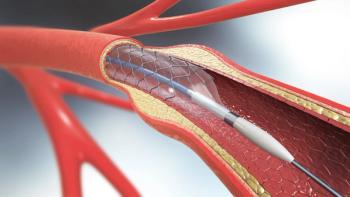
Oral Insulin Is Delivered Successfully Via Rat Colons, Study Result Show
Analysis demonstrates that the tablets can significantly reduce the animals’ blood glucose levels for more than 5 hours.
Investigators have delivered insulin to rat colons via an orally administered tablet using micromotors, according to the results of a study published in ACS Nano.
Individuals with
An oral form of insulin is preferred, but the stomach breaks down and neutralizes it before it can be absorbed into the intestines and enter the bloodstream. Previous attempts at an oral insulin included micro- or nanocarriers and passively diffuse into the cells that line the colon, but it has been found to be inefficient. One reported approach for insulin in an oral form is moving the medication around the body instead, such as through the mucosal layer of the small intestine.1
Investigators aimed to achieve a similar effect with their insulin-loaded mini-tablets, which contained chemical micromotors that delivered insulin to the colon effectively and safely.1
The tablets were covered in magnesium microparticles with a layer of insulin-containing solution, as well as a layer of liposomes. Investigators mixed these particles with baking soda, pressed them into mini tablets that were about 3 mm long, and then covered them with an esterified starch solution.1
Starch protected the tablets from stomach acid, which allows the tablet to reach the colon while still intact. As the tablets break down, the magnesium microparticles reacted with water to generate a stream of hydrogen gas bubbles, which acted as the micromotors propelling insulin to the colon’s lining.1
Investigators tested the tablets in rats and found that the tablets could significantly reduce the animals’ blood glucose levels for more than 5 hours. The glucose level was maintained almost as low as injection-delivered insulin.1
These results could indicate a more concrete step toward creating more oral formulation of traditionally injection-only medicine, they said.1
Diabetes can manifest in young individuals who have a genetic predisposition, when an autoimmune process was initiated by the action of environmental factors2 or can result in an impairment in the way that the body regulates and uses glucose.3
Diabetes can be developed at any age, but type 1 diabetes usually occurs at approximately aged 13 or 14 years,2 and type 2 diabetes (T2D) typically develops in individuals aged 45 years or older.3
T2D symptoms can develop over several years and can last for a long time without being noticed, and sometimes, there are no noticeable symptoms at all.3
References
1. Another step toward an insulin tablet. EurekAlert. News release. January 9, 2023. Accessed January 10, 2023. https://www.eurekalert.org/news-releases/975895
2. Dymala K. Clinical Overview: teplizumab for type 1 diabetes mellitus. Pharmacy Times. December 5, 2022. Accessed January 10, 2023. https://www.pharmacytimes.com/view/clinical-overview-teplizumab-for-type-1-diabetes-mellitus
3. Type 2 diabetes. CDC. Updated December 16, 2021. Accessed January 10, 2023. https://www.cdc.gov/diabetes/basics/type2.html
Newsletter
Stay informed on drug updates, treatment guidelines, and pharmacy practice trends—subscribe to Pharmacy Times for weekly clinical insights.






































































































































































































